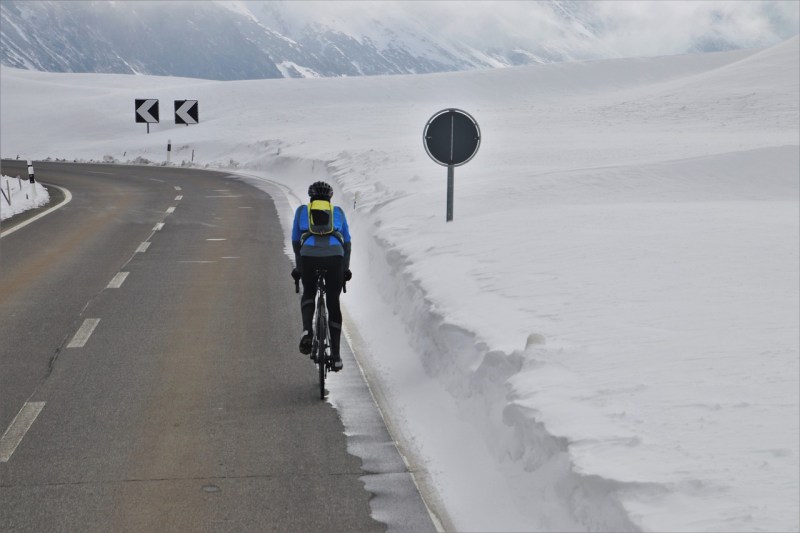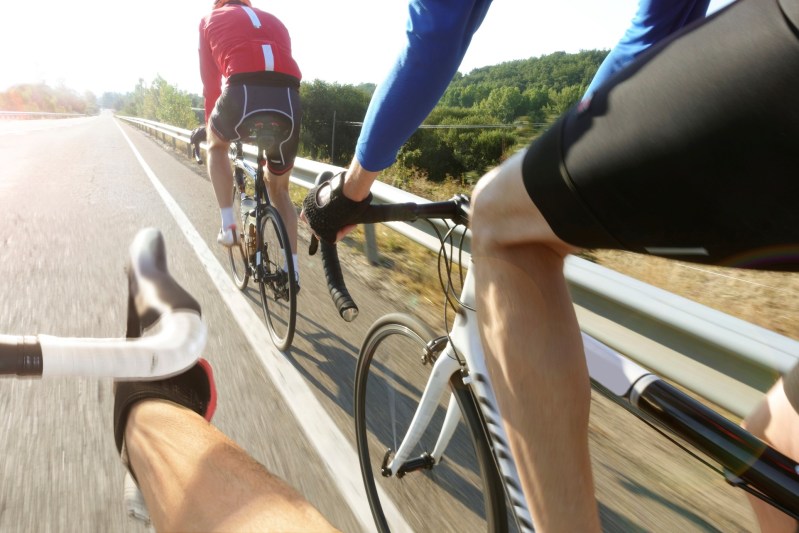
Some people think of cycling as a three-season sport, and while spring, summer and fall are glorious times to ride, winter can also be a great time to grab your bike and hit the road, too. While there are plenty of challenges to cold-weather cycling, one of the biggest issues is dressing well for the conditions. Winter mornings and evenings when the sun is rising or setting can be very cold. But in the middle of the day when the sun is at its peak and you are working to climb hills or riding against a strong wind, chances are you’ll build up a sweat. To keep yourself comfortable during a winter ride, you need to layer with precision.
Related Guides
Foundation Layers

The most important part of dressing for cold-weather cycling is getting your first, foundational layer, which is closest to the skin, just right. This layer should be one that wicks sweat away efficiently yet keeps you warm as your body cools off. It’s no secret that merino wool is one of the best options for doing just that. That’s why wearing an undershirt made of merino wool is a great choice underneath your favorite cycling jersey.
Once you’ve chosen a great base layer, you can opt for a thick, full-zip jersey for the best insulation with the option to unzip to cool off. If you live somewhere that gets cold, but not excessively so, you might choose a short-sleeved jersey to pair with accessory garments. Regardless, continuing to use a jersey is a smart move so you can easily stash things you might need to quickly access while out riding.
Outer Layers

Depending on the weather you are working with, there are a couple of different outer layer options. You can always throw on a rain jacket or coat with good ventilation under the arms for a waterproof layer. However, there are tons of other lighter options that are perfect for keeping you dry underneath the layer. These layers also tend to be windproof and can be quite helpful for locking heat in.
If it is particularly cold though, you can toss on a thicker jacket that will keep you warmer on descents or after the temperature drops. For added protection, simply pull on the thin wind- and waterproof jacket to stay dry and warm. Even if you’re sweating, a proper base layer should keep you dry no matter how warm the top layers are. That can be especially helpful given that some jackets can begin to cling to the skin.
Tights, Shorts and Overshorts

While keeping the core warm should be your highest priority, keeping the legs warm is a close second. Choosing the right bottoms for cycling highly depends on the temperatures in the forecast. Medium weight to thick tights are the best option for freezing temperatures. You can easily layer another pair of bottoms such as overshorts for added warmth, too.
Temperatures that start out cold during your ride and heat up throughout the day to a pleasant riding temperature are better suited to shorts. While you can use regular cycling shorts and pair them with accessory garments for effective warmth and coverage, there are also winter-grade shorts made with insulation materials. So, consider investing in an additional pair of chamois just for cold winter days.
Accessory Garments
Finally, you can add all kinds of accessory garments to protect your extremities and keep you warm. One great piece to have at the ready is a hat underneath your helmet. A significant amount of body heat leaves the body through the top of the head. That’s why in very cold weather, it is really important to keep your head warm. Opt for a thin merino wool skullcap or a wind- and waterproof cap for inclement conditions.
Another type of garment to consider for your extremities includes sleeves. Sleeves are tube-shaped garments for your arms and legs. The great thing is that you can slip them off whenever you get warm enough that you need to shed a layer.
Of course, shoe covers, a warm fleece buff for your neck, and gloves with good grip are all important items to consider, too. No matter how cool or cold the weather turns, with these essential cold-weather cycling clothes you can keep cruising no matter what the weather has in store.


